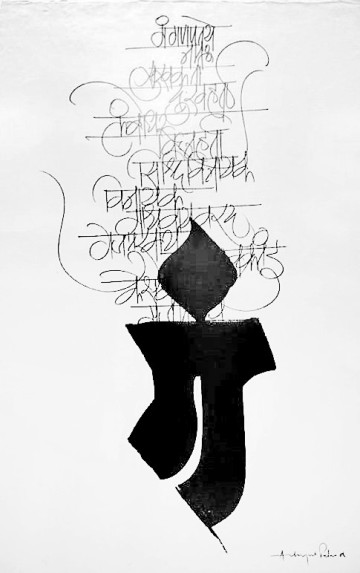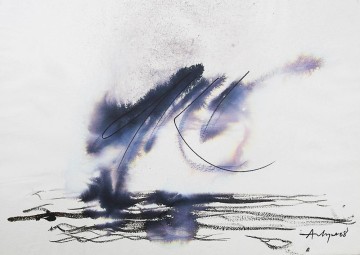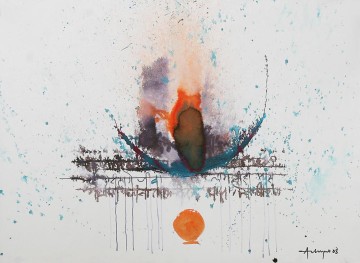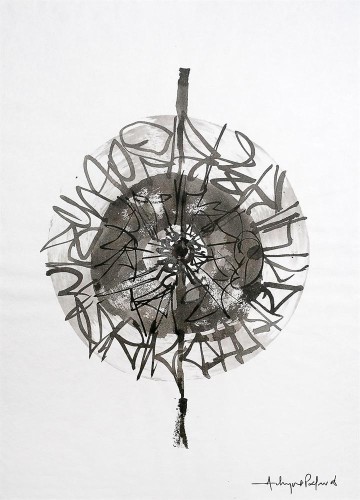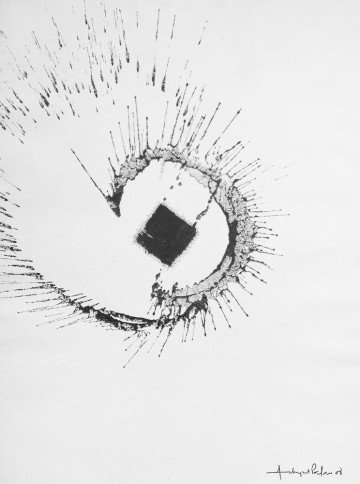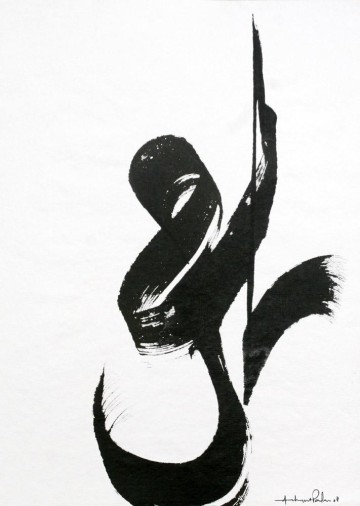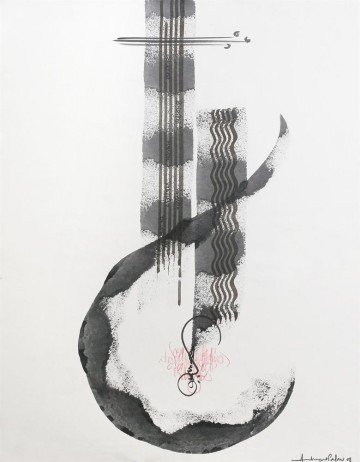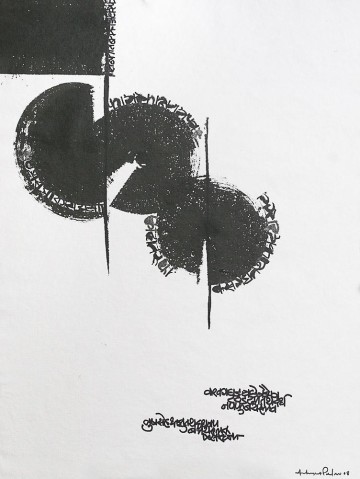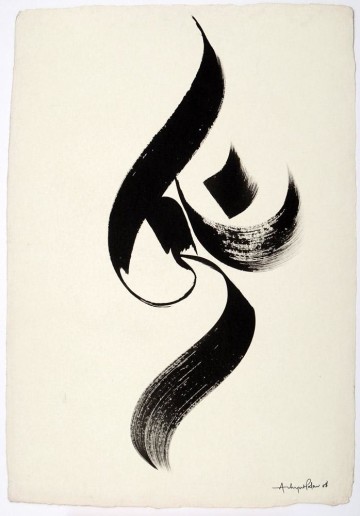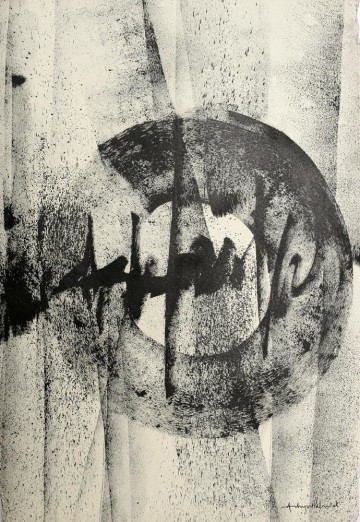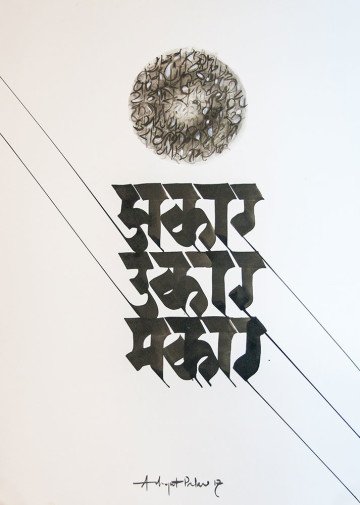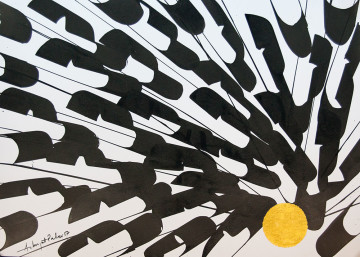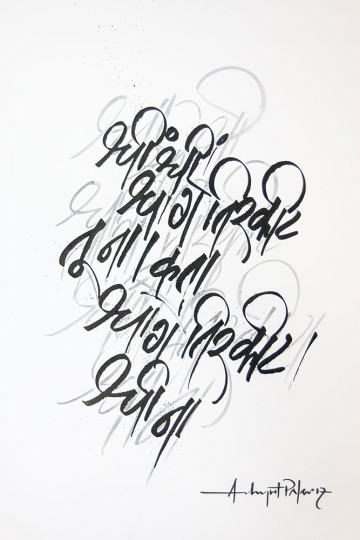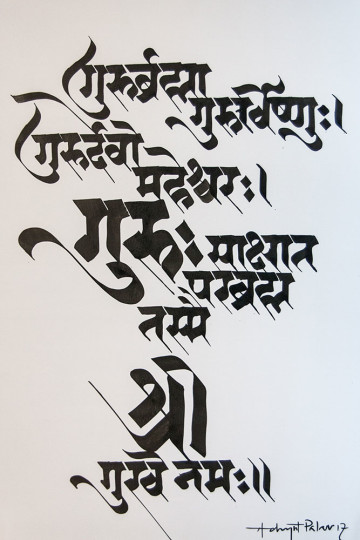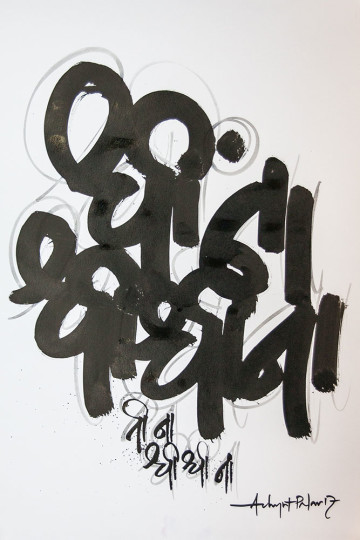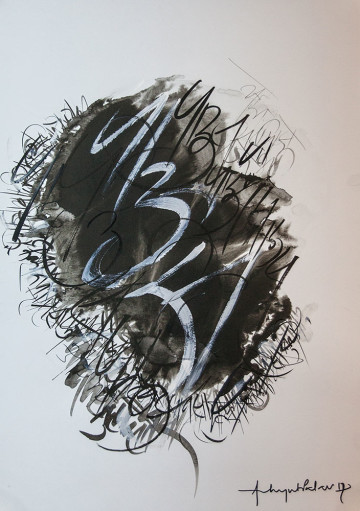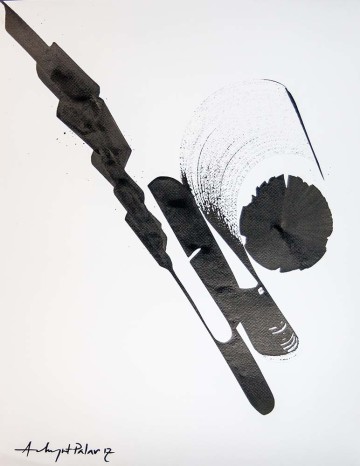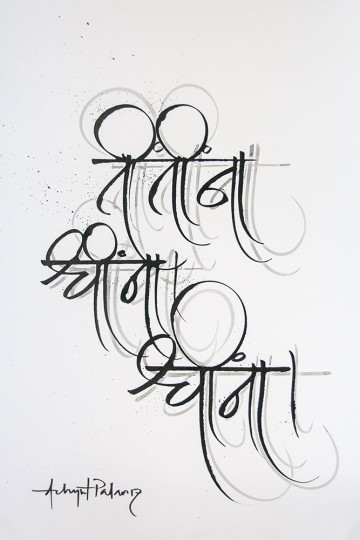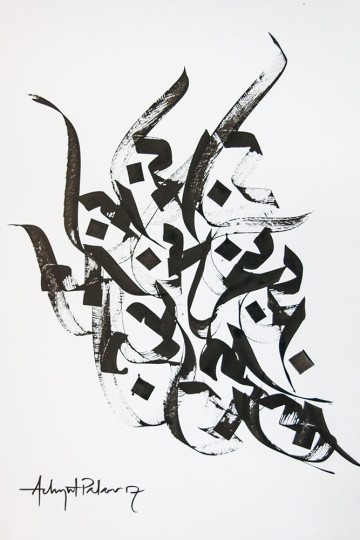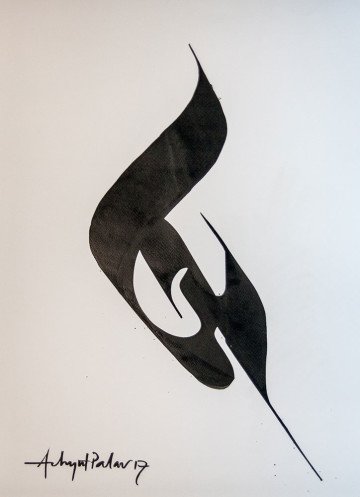Achyut Palav
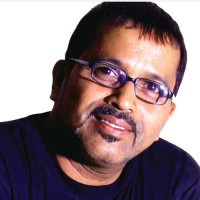
Achyut Palav
Mumbai, India
Calligrapher, designer, non-staff worker, Sir J.J. College of Applied (Commercial) Art (Mumbai University)
Calligraphy - Expressing Beyond Words
What I am today is a byproduct of pursuing calligraphy. It has given me an identity. It has been a part of me since childhood. As a child I had taken it in the literal sense, calligraphy means good handwriting. But it was in my youth that I exploited it as an art and dedicated myself to expanding its horizons. My country, India, with its beauty of scripts, charming people, abundant nature, mesmerizing culture and religious tolerance has been an eternal source of inspiration.
Calligraphy is essentially an art form though in a literal sense its meaning is “beautiful handwriting”. The strokes when conformed to writing will give you various fonts and typesets but when one opens the inner eye and lets his imagination run wild, art masterpieces get created on plain canvases. When a person learns to write, he becomes literate and when he understands the essence of letters he transforms into an artist.
Calligraphy is equally beautiful in black and white as it is in colours. A true artist will manipulate its strokes to create paintings. To become a calligrapher one need not be good at drawing, nor have good handwriting. He just needs a broad mind, a yearning to see beyond the certain rigidity of letters that has been embedded in our minds.
Calligraphic creations are gaining popularity in commercial areas too. Calligraphic compositions have shown their potential equivalent to abstract or fine art ones. Similarly calligraphy has been experimented on and its application has transcended orthodox and various conventional and unconventional tools and mediums have been brought to use. The art has also been proved to have a high commercial quotient.
I have used calligraphy successfully in weddings, fashion, interiors, paper articles as gift items, cards, body painting, architecture, installations, ceramic, print and electronic media. I have even used calligraphy as a therapy for personality development. I have experimented with tools and media alike.
My low point has always been that, in India, a country that has such a wide range of beautiful scripts and a vast artistic heritage, people can be so ignorant and indifferent to calligraphy. I dream of the day when calligraphy is taught in schools around the world, alongside the subjects like art, craft and drawing. The need of today is to convey the same and take the knowledge and experiences of artists and calligraphers, gathered in their quest for calligraphy among the people who have a great potential of becoming the Next-Gen artists of the modern world.
Author works
Wind
Cartrige paper, Photocolor and Chinese ink, round brush, flat brush, spray bottle, permanent marker, 76,5x56,5 cm, 2008.Akshar Chakra (Circle of letter)
Handmade paper, Chinese ink, foam brush, round brush, 56,5x76,5 cm, 2008.Power, Vigor, Valour
Catrige paper, Chinese ink, foam roller, coit pen, color pencil, 56,5x76,5 cm, 2008.‘Akaar’ to ‘Omkar’
Letters in Devnagari Script, Calligraphic strokes on paper,Black Chinese Ink on Paper, Steel Pen & Foam Round Brush, 720 x 510 mm, 2017Core Energy
Letters in Devnagari Script, Calligraphic strokes on paper, Black Chinese Ink & Gold – Acrylic Colour on Paper, Round Brush & Steel Pen, 720 x 510 mm, 2017Ek Taal
Letters in Devnagari Script, Calligraphic strokes on paper, Black Chinese Ink on Paper, Cola Pen & Round Brush, 720 x 510 mm, 2017Guru Gaurav
Letters in Devnagari Script, Calligraphic strokes on paper, Black Chinese Ink on Paper, Steel Pen, 720 x 510 mm, 2017Jhap Taal
Calligraphic strokes on paper, Black Chinese Ink on Paper, Make up Pen (Blusher) & Cola Pen, 720 x 510 mm, 2017Moods of Rain
Letters in Devnagari Script, Calligraphic strokes on paper, Black Chinese Ink on Paper, Round Brush & Flat Brush, 720 x 510 mm, 2017OM - The Power Within
Letters in Devnagari Script, Calligraphic strokes on paper, Black Chinese Ink on Paper, Steel Pen, 585 x 455 mm, 2017The Journey
Letters in Devnagari Script, Calligraphic strokes on paper, Black Chinese Ink on Paper, Steel Pen, Script Used: Devnagari, 720 x 510 mm, 2017Calligraphy — the written beauty of feelings.
